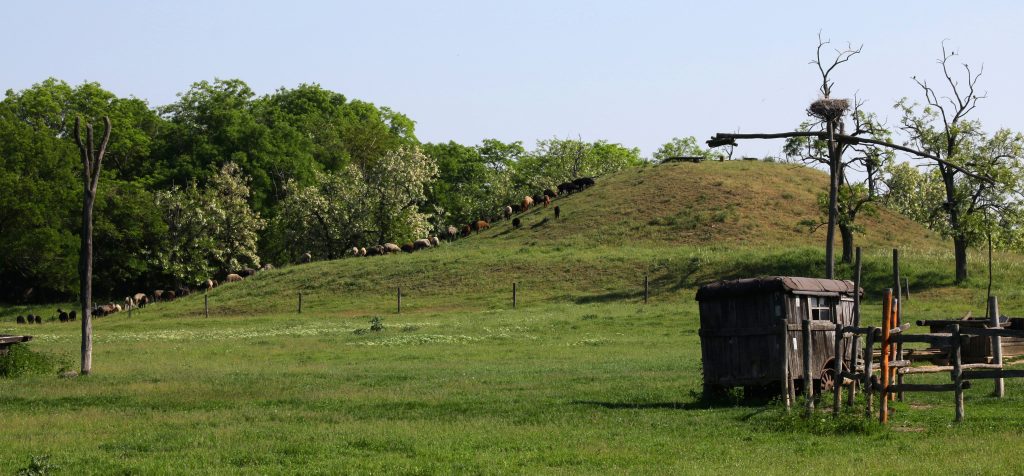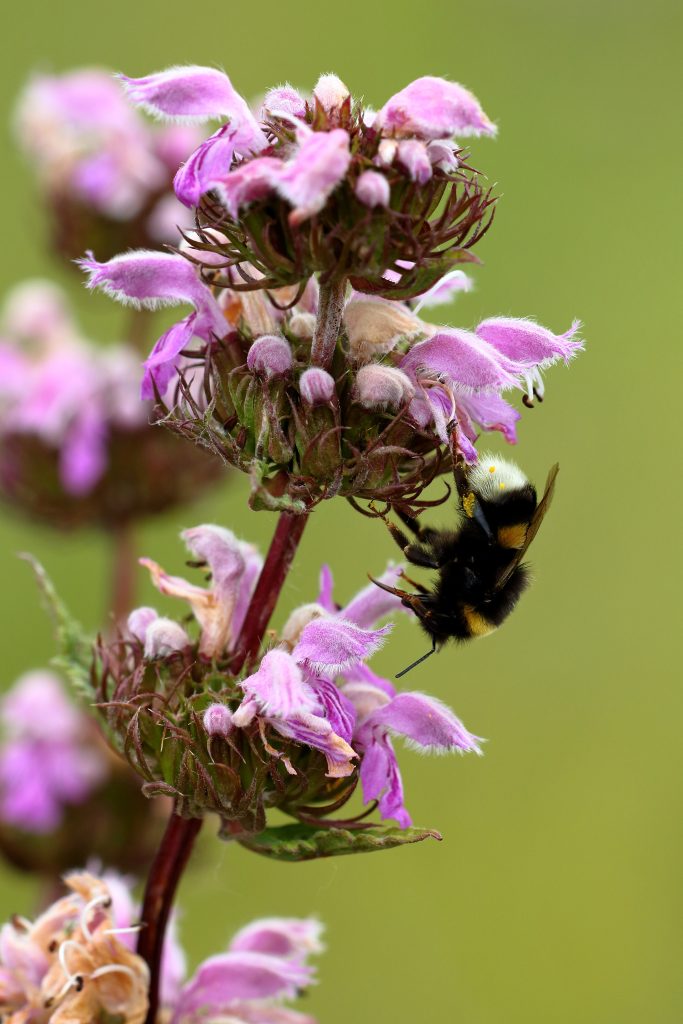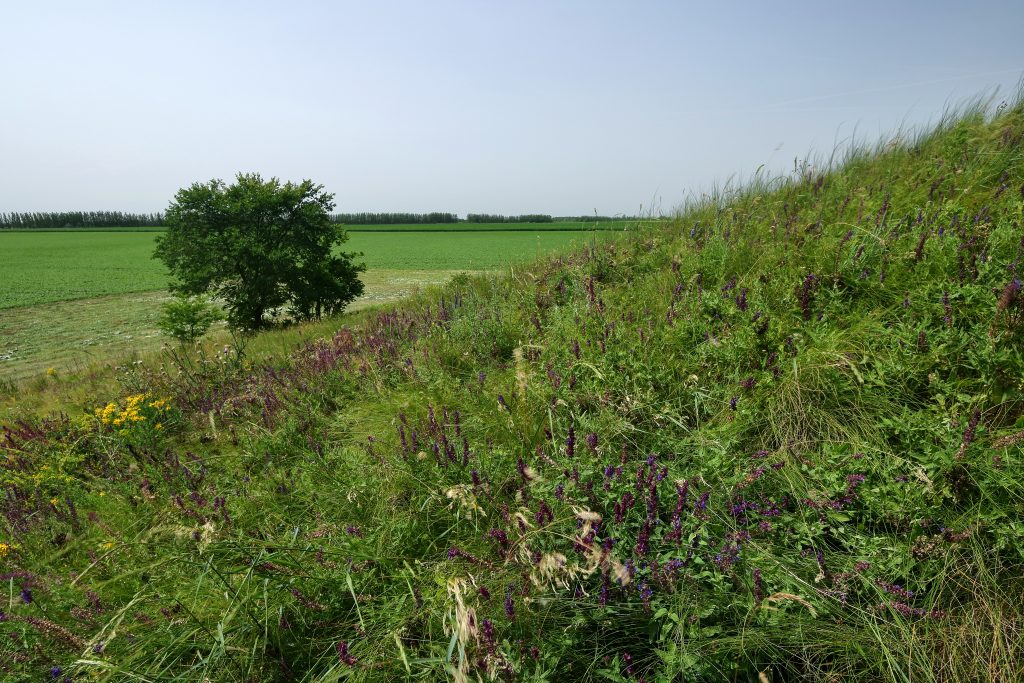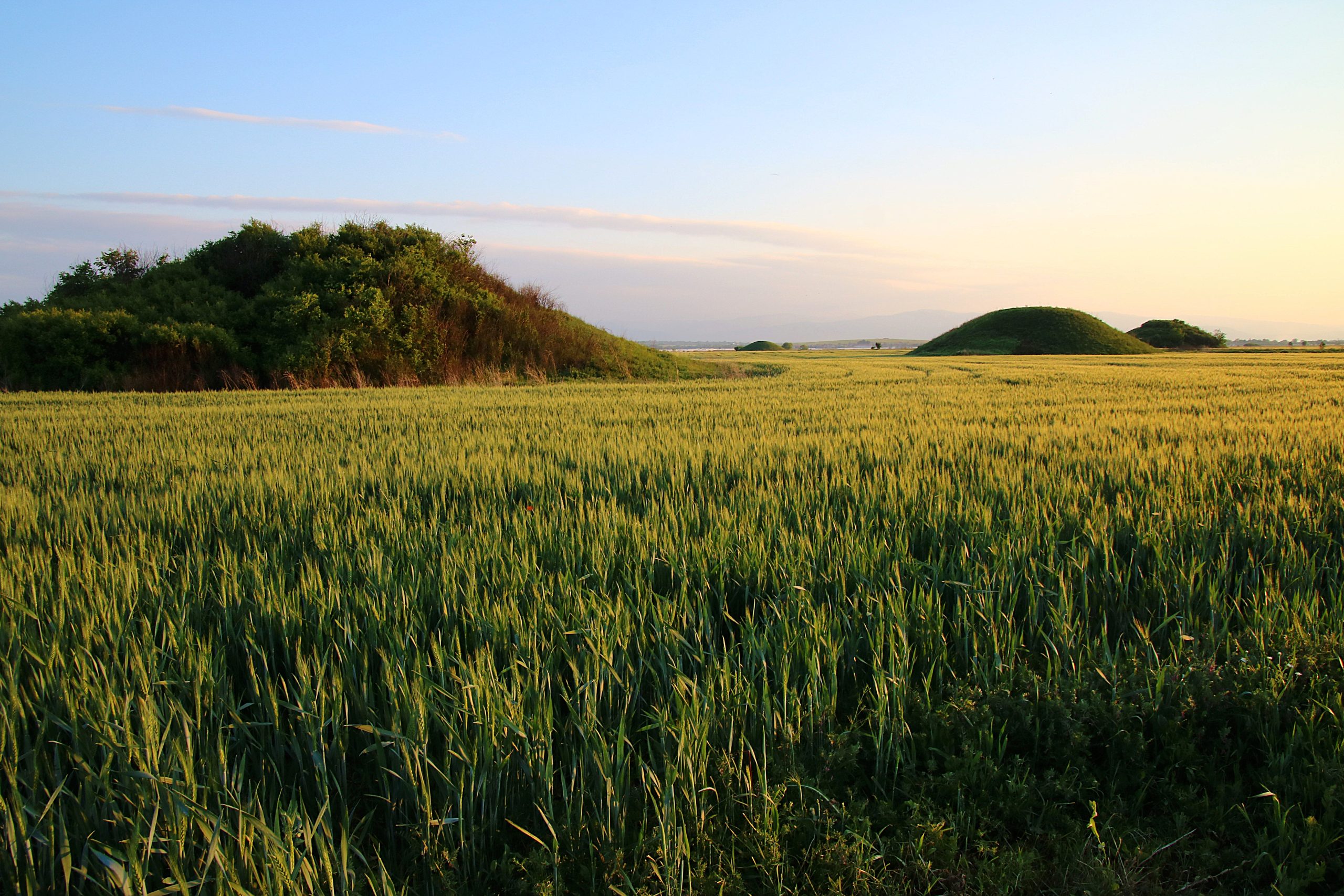Feature image: Kurgan field, Bulgaria
Civilisations, including ancient ones, have considerably shaped global ecosystems in many ways through the co-evolution of landscapes and humans. In certain cases, the legacy of ancient and disappeared civilisations is still visible as landmarks, such as Stonehenge and the Egyptian pyramids.
In the vast steppes of Eurasia, the most widespread ancient human-made structures are burial mounds called ‘kurgans’. Kurgans are a few metres high and built of soil or stones. Most of them were constructed by nomadic herders of the Yamnaya culture between 3100–2500 BC. Many kurgans were destroyed during the past centuries, but approximately 600,000 mounds are still present in the steppes that stretch from central Europe to the Altai Mountains in Central Asia. Although the mound builder civilisations vanished a long time ago, subsequent cultures recognised the importance of these sites and they are considered spiritual hotspots even today.

Aside from being an integral part of our cultural heritage, kurgans are covered by millennia-old steppe vegetation—making them important for biodiversity conservation. Because of their hill shape, kurgans contain several contrasting microhabitats that sustain high levels of biodiversity, even at small scales. This is especially important because in previous centuries, millions of hectares of steppe habitat has been destroyed by the expansion of arable lands and infrastructural development—a process that, unfortunately, is still ongoing in many regions. Nowadays, remaining steppes are also threatened by the marked changes in the lifestyle of local people: steppes formerly used as extensive pastures are often overgrazed or abandoned, leading to the decline of the natural flora and fauna. Thus, in rapidly changing landscapes, sites that preserve remaining steppe stands can be
considered the last refuges for biodiversity.
The ecological role of kurgans
By assembling an extensive dataset of 1072 mounds situated in the steppe biome from Hungary to Mongolia, we aimed to elucidate the conservation potential of kurgans in Eurasia. We also evaluated how extant cultural and spiritual values bound to the kurgans support the maintenance of grasslands in their vicinity. By involving scientists and citizens from eight countries across the steppe biome, we collected data on the presence of grasslands on the mounds, landscape context (such as land cover around the mound, threat factors) and cultural values associated with the mounds (such as the
presence of sacred buildings and objects, folkloristic values and old tales). Our hypothesis was that cultural values can effectively support the
conservation of steppe grasslands on the mounds.

Our study found that kurgans can fulfil multiple ecological functions,
depending on the landscape context. In agricultural landscapes where
grasslands were almost completely destroyed, more than half of the mounds
preserved grassland vegetation and acted as ‘terrestrial habitat islands’ for the last remnants of steppes. In moderately fragmented landscapes, kurgans
covered by grasslands functioned as stepping stones connecting distant
populations of grassland biota. In the vast steppes of Central and East Asia most of the mounds supported grasslands. Here, their conservation
importance was mostly related to their high biodiversity.
Guardians of steppe grasslands
Interestingly, many kurgans are still actively used as spiritual or cultural places. We recorded 57 different types of cultural values associated with the kurgans. Cultural recognition and respect of local communities greatly
supported the maintenance of grasslands. Kurgans with cultural protection have a well-kept appearance, and people often maintain them with
traditional land use practices (such as mowing). Moreover, cultural
recognition also halts detrimental land use practices such as ploughing. Grassland presence was comparable on mounds within protected areas and on mounds located outside the reserves but with cultural values. Unsurprisingly, cultural protection almost doubled the chance of grassland presence on kurgans outside protected areas, as compared with those
outside protected areas but without cultural values.

Our study suggests that to complement and support the system of protected areas in steppe ecosystems, it is crucial to acknowledge the conservation potential of those sites that due to their associated cultural values can harbour natural habitats even in non-protected landscapes. We emphasise that an integrative socio-ecological approach could effectively support the synergies among conservational, landscape and cultural values.
Further reading:
Deák, B., Á. Bede, Z. Rádai, I. Dembicz, I. Apostolova, P. Batáry, R. Gallé et al. 2023. Contribution of cultural heritage values to steppe conservation on ancient burial mounds of Eurasia. Conservation Biology 37(6): e14148. https://doi.org/10.1111/cobi.14148.






